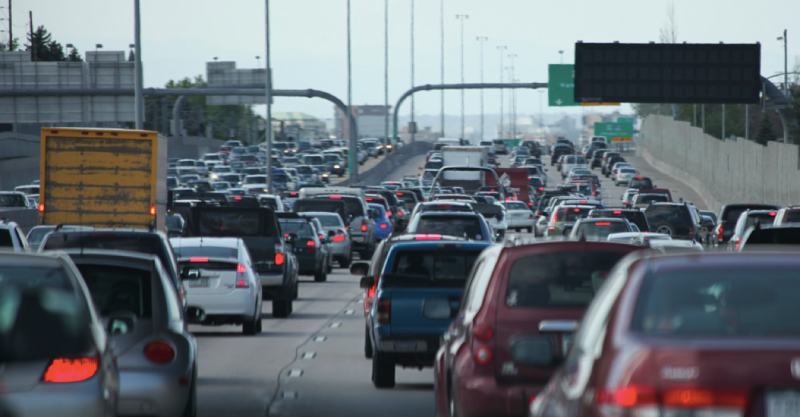CDOT’s Blind Spot — Wider Highways and New Tech Won’t Cure Congestion

The Colorado Department of Transportation has two strategies for dealing with traffic congestion and pollution: wider roads and high-tech vehicles. If it doesn’t disrupt people traveling long distances in cars, CDOT will sink resources into it.
Take the I-70 project in north Denver, where CDOT plans to spend more than a billion dollars in the name of congestion relief while neighborhood residents fear more harmful traffic emissions in an area already disproportionately affected by pollution.
Not to worry, CDOT Executive Shailen Bhatt told north Denver residents during a public meeting last month, because more lanes will actually improve air quality!

“There are 200,000 vehicles a day that are on that highway right now,” Bhatt said. “Part of the air quality issues that are arising here is because traffic is at a standstill for much of the day on this highway.”
This is a statement straight out of the 1960s, when the interstate system was new and the vicious cycle of road widening and traffic generation wasn’t well understood. Since that time, mountains of evidence have accumulated proving that widening congested roads leads people to drive more.
Other state DOTs, most notably in California, have admitted that wider highways don’t fix congestion — they generate more traffic. But to CDOT, apparently, the principle of induced demand just doesn’t apply to I-70, even though it perfectly describes what happened on I-25.
At the same time, Bhatt is betting on CDOT’s RoadX initiative to deliver what the agency describes as “technology-enabled congestion relief and safety improvements.”
If CDOT is serious about technology delivering congestion relief, though, why are projects like the I-70 widening, which will scar north Denver for generations, even necessary?
The fact is that road expansion is a discredited tactic, and high-tech fixes are purely speculative at this point. These are the strategies of an agency that refuses to face up to the futility of car-based solutions to traffic congestion.
So what would lead to cut traffic in Denver? The key is to reduce car travel, not enable more driving.
Recent research from the State Smart Transportation Initiative (SSTI) isolated six factors that affect how much people drive. Homes clustered together with other uses, walkable street grids, good sidewalks and convenient access to transit — these are the building blocks of a low-traffic city.
CDOT could help reduce the traffic burden in Denver neighborhoods by replacing I-70 with a surface boulevard. That would set the stage for many of the strategies identified by SSTI.
A wider highway will do the opposite — entrench car travel at the expense of walking, biking, and transit.


